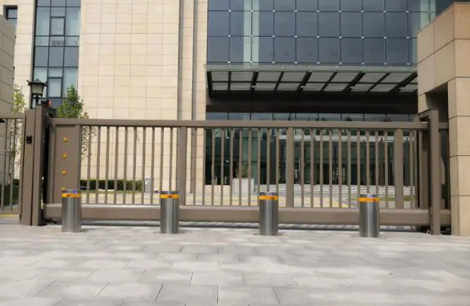Bollards come in various sizes to cater to different applications, from enhancing security to managing traffic. Selecting the right bollard size is crucial for ensuring optimal functionality and effectiveness in its intended role. In this comprehensive guide, we provide key considerations and a step-by-step approach to help you choose the right bollard size for your specific needs.
1. Determine the Purpose of the Bollard
The first step in choosing the right bollard size is clearly defining its purpose. Different applications require varying sizes to fulfill their functions adequately. Consider whether the bollard is primarily for security, traffic control, or decorative purposes. Security bollards may need to be larger and more robust, while traffic management bollards might be shorter and more visible. Defining the purpose provides a foundation for selecting the appropriate size.
2. Assess the Level of Security Needed
If the bollard’s purpose is to enhance security, assess the level of protection required. High-security areas, such as government buildings or critical infrastructure, may necessitate larger and more impact-resistant bollards. Consider factors like the potential impact force of a vehicle and choose a bollard size that provides the necessary level of protection against unauthorized access or vehicular threats.
3. Evaluate the Surrounding Environment
The environment in which the bollard will be installed plays a significant role in determining the appropriate size. In urban settings with pedestrian traffic, shorter bollards may be preferred to ensure visibility and prevent obstruction. In industrial or parking lot settings, taller bollards may be suitable for increased visibility and impact resistance. Assess the space and surroundings to determine the right bollard height and diameter that align with safety and aesthetic considerations.
4. Consider Visibility and Aesthetics
Beyond functionality, consider the visibility and aesthetic aspects of the bollard. Reflective or illuminated bollards enhance visibility, especially in low-light conditions. Additionally, bollards can contribute to the overall aesthetic of the environment. Choose a size that complements the architectural and design elements of the space while ensuring that the bollard remains easily noticeable for its intended purpose.
5. Check Local Regulations and Standards
Local regulations and industry standards may dictate specific requirements for bollard sizes in certain applications. Check with local authorities or relevant standards organizations to ensure compliance with safety and security guidelines. Adhering to established standards not only ensures the effectiveness of the bollards but also helps prevent potential liabilities in case of accidents or security breaches.
6. Seek Professional Guidance
When in doubt or faced with unique requirements, it’s advisable to seek professional guidance. Consult with security experts, architects, or bollard manufacturers who can provide insights based on their expertise and experience. They can assess your specific needs and recommend the right bollard size to achieve the desired outcomes.
By following this comprehensive guide, you can navigate the process of choosing the right bollard size with confidence. Whether enhancing security, managing traffic, or contributing to the aesthetic appeal of a space, selecting the appropriate size ensures that bollards fulfill their intended purpose effectively and seamlessly integrate into their environment.


